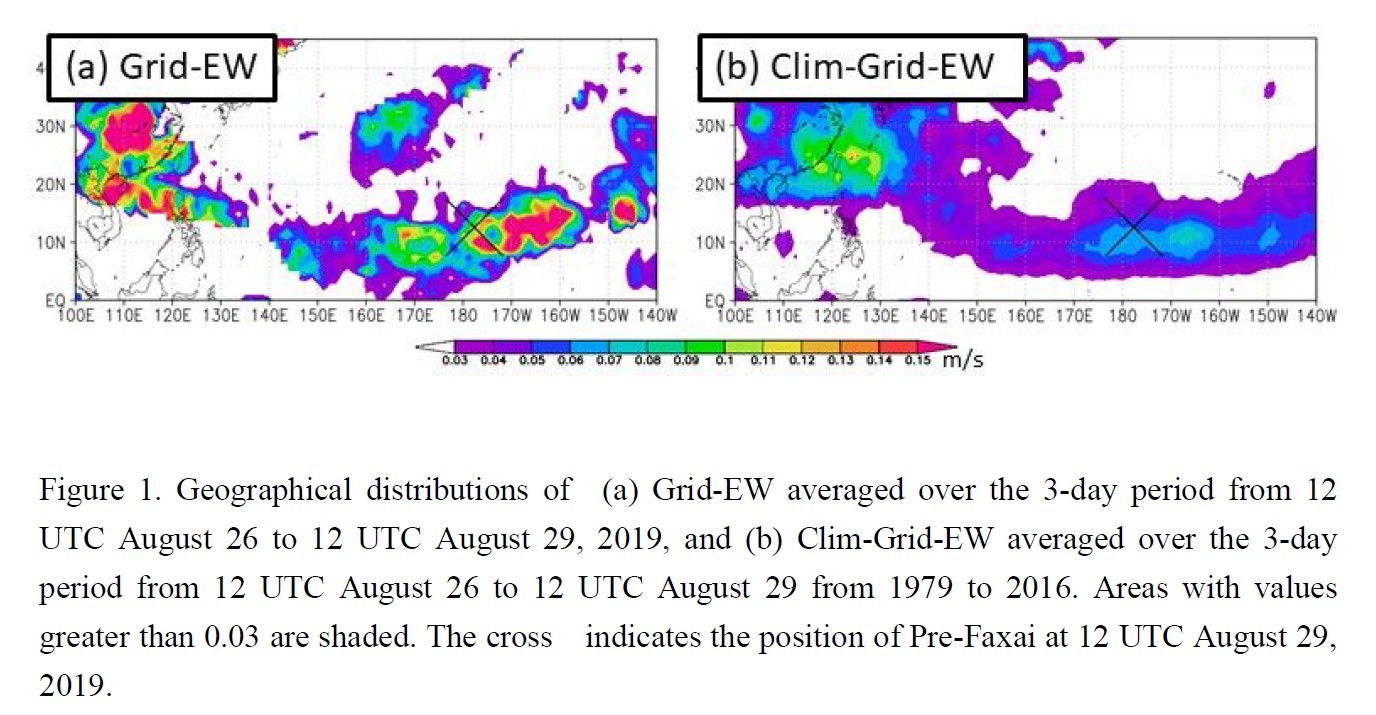Graphical Abstract
Fudeyasu, H., U. Shimada, Y. Oikawa, H. Eito, A. Wada, R. Yoshida, and T. Horinouchi, 2022: Contributions of the large-scale environment to the typhoon genesis of Faxai (2019). J. Meteor. Soc. Japan, 100, 617-630.
Special Edition on Typhoons in 2018-2019,
https://doi.org/10.2151/jmsj.2022-031.
Graphical Abstract
Plain Language Summary: This study investigated the atmospheric and oceanic contributions to the genesis of Typhoon Faxai in 2019. Statistical analysis, the Tropical Cyclone genesis Score (TGS) and Typhoon Intensity Forecast Scheme (TIFS) detected the tropical disturbance that developed into Faxai 10 days before the typhoon arose, an indication that monitoring environmental factors such as easterly waves and vertical wind shear are important for disaster prevention.
Highlights:
- The score evaluated by a grid version of the TGS averaged around the occurrence of Faxai was approximately twice as large as the climatological mean. It was the second largest value in the past 38 years.
- The Faxai area with high scores could be traced back to the eastern North Pacific around August 25, 2019.
- The Faxai area with high scores moved westward because of the background easterly flow over the eastern North Pacific, then entered the western North Pacific.
- The TIFS showed that the important environments for its genesis were ocean conditions and the vertical wind shear. The oceanic conditions contributed to the development of Faxai as it traveled over the western North Pacific.







